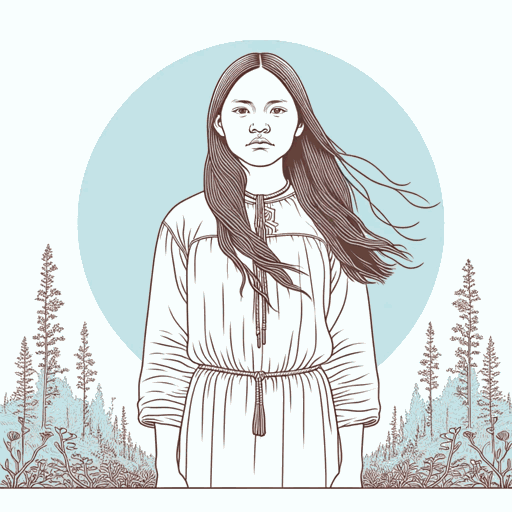45 pages • 1 hour read
Zitkála-ŠáAmerican Indian Stories
Fiction | Short Story Collection | Adult | Published in 1921A modern alternative to SparkNotes and CliffsNotes, SuperSummary offers high-quality Study Guides with detailed chapter summaries and analysis of major themes, characters, and more.
Summary and Study Guide
Overview
Zitkála-Šá’s 1921 book American Indian Stories gathers autobiographical chapters, fictional stories, and essays focused on the experiences of the Dakota Sioux and interactions between American Indians and White citizens of the United States. Zitkála-Šá’s works convey a strong sense of independence, pride in Sioux culture, and indignation at injustices committed against American Indians. This study guide references the 2019 Modern Library (Penguin Random House) edition of American Indian Stories.
Summary
The collection begins with an autobiographical piece, “Impressions of an Indian Childhood,” which describes Zitkála-Šá’s upbringing. She recalls her mother telling her stories about Sioux traditions and warning her about White settlers, whom her mother deems cruel and untrustworthy. Zitkála-Šá convinces her mother to allow her to attend a mission school far away from the Sioux reservation.
“The School Days of an Indian Girl” depicts Zitkála-Šá’s time at a mission school. She experiences attempts to force American Indian children to assimilate into White culture, such as a requirement that she cut her hair. Zitkála-Šá tries to understand Christianity but also rebels against the school’s strict expectations. She returns home yet decides to go back to the school, no longer feeling like she fits in on the reservation. Zitkála-Šá excels at college but continues to face discrimination.
“An Indian Teacher Among Indians” tells how Zitkála-Šá becomes a teacher at an Indian school after college. She is belittled by the school director and exhausted by conditions at the institution. Nevertheless, she later agrees to travel west to recruit American Indian children for the school. She visits home and is shocked by the injustices committed against the Sioux by White settlers and the US government. She resigns from her teaching position.
“The Great Spirit” is an autobiographical essay expressing Zitkála-Šá’s support of Sioux spirituality. She lovingly describes the natural imagery of her homeland and the close spiritual bond she feels with the natural world. She mentions how an acquaintance criticized her for not adopting Christianity, but Zitkála-Šá proudly declares her allegiance to the Sioux Great Spirit rather than Christian dogma.
“The Soft-Hearted Sioux” tells the story of a Sioux man who goes to a mission school and becomes an evangelist preaching Christianity to his tribe. The tribe criticizes him for turning his back on his people and his deathly ill father. The man steals a cow from a White man’s herd and murders the White man, who pursues him for the theft. The Sioux man is imprisoned for the crime and wonders if Christ will save him.
In “The Trial Path” the narrator learns about her grandfather, who once killed a man out of anger. As a punishment, he is made to ride a wild pony through the tribal village. If he falls off, he will be put to death. He survives the trial and is accepted as a son by the family of the murdered man.
In “A Warrior’s Daughter” a Dakota woman named Tusee is told she can marry a young brave only if he brings her father the scalp of an enemy warrior. The young brave goes to attack the enemy but is captured. Tusee secretly goes to the enemy camp and manages to lure away the warrior who is preparing to kill the young brave. Tusee then rescues her beloved.
The narrator in “A Dream of Her Grandfather” is a liaison between American Indians and the US government, working to improve relations. She dreams that she receives a cedar chest from her grandfather, who was a medicine man. She is surprised to see the chest contains a magical vision of a more hopeful future for the Dakota people.
“The Widespread Enigma Concerning Blue-Star Woman” describes Blue-Star Woman, a Sioux with no known family. Two men claiming to be her nephews promise to secure her rights to land in exchange for half of what she receives. The tribe is upset that Blue-Star will receive land. Their chief goes to mail a letter of protest. He decides to burn the letter instead and is arrested for alleged arson. He is released from prison, but the two men arranged the release only in exchange for half of the chief’s land.
In the essay “America’s Indian Problem,” Zitkála-Šá criticizes the US government’s treatment of American Indians as wards rather than citizens. She insists that American Indians be granted legal rights and treated equally. The essay closes with several excerpts from a government report on the Bureau of Indian Affairs.

